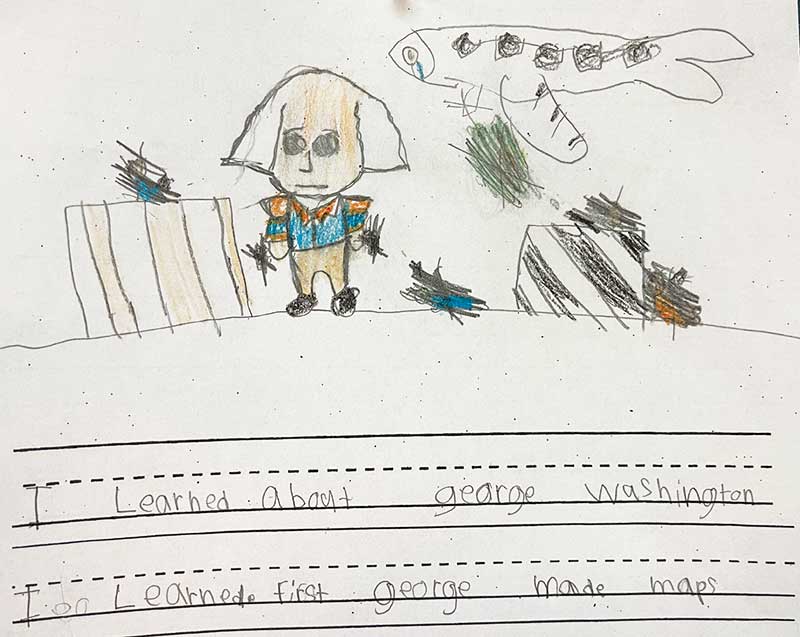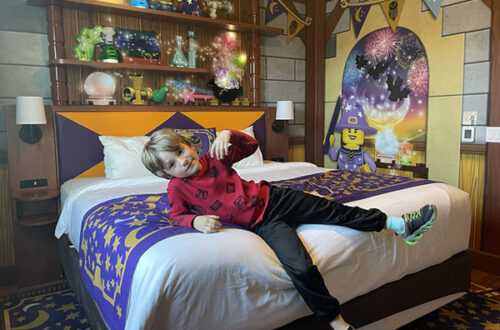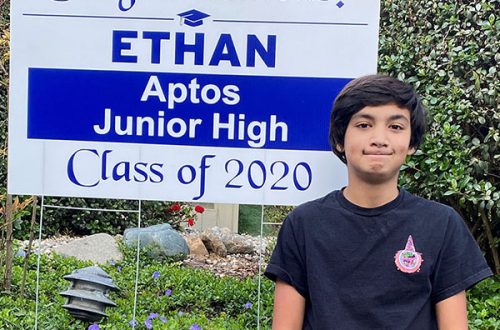What began as a simple weigh-in from Bay Area parents on whether kids should be allowed to draw guns with historical figures in schools, exploded into much larger topics on what is deemed inappropriate, policy consistency, societal dysfunction and personal expression in and outside of the classroom. There is no blanket law in the state of California on what is and what is not allowed to be drawn in schools, rather, it’s up to the discretion of the individual teacher.
This is just a preliminary discussion on this topic, let’s keep it going…
CONSISTENCY IN THE CLASSROOM
“School districts are not given standards on what age can be drawing guns; there’s no written policy of things you are not allowed to draw,” said Chief of Communications and Community Engagement for the Santa Cruz City Schools, Sam Rollins. “It’s up to the discretion of the teacher if they find something disturbing or violent.”
San Jose mom, Megan Thiele Strong wants no guns, in pictures or for play. “It seems like there has to be a boundary somewhere, and I fully support a boundary being no pictures of guns allowed. As we all know, as we all so deeply know, guns do not belong in schools.”
Gina Grajewski, a Santa Cruz parent, agrees that no guns should be drawn in the classroom under any circumstance. “It’s my understanding that this is just a rule. No guns at school. No drawings. Period. No gun play. Period. No guns. Period,” said Grajewski, a PVUSD parent.
In the case of a teacher discovering something that a student has created disturbing, said teacher would make the time to speak to the student regarding their relationship to firearms, then the teacher would seek a conversation with the parents, according to Rollins. “This is to make sure there’s nothing dangerous going on in the student’s life,” said Rollins. “This would be a really extreme case to trigger conversations, however.”
One Santa Cruz parent, Kathy Vega, also takes the position of no gun pictures in schools. “I agree with the rules of not drawing guns or weapons at school,” she said. “If anything, we should try to educate our children not to touch guns in hopes that they will make that decision if they happen to be in a situation where they have access to one.”
“An open and informative dialogue including gun safety would be more productive rather than blanket banning or making the topic a taboo,” said Sandra Orozco, a Santa Cruz parent. “Children are curious and/or exposed to weapons of different diets, monitoring their drawings I doubt will have the intended impact. I think they should have the opportunity to talk about guns in a safe, age-appropriate way.”
Agreeing with discussion first, another Santa Cruz mom, Robin McClenahan, looks at gun safety as an opportunity. “Demonizing topics for kids is never a solution in my opinion,” she said. Also weighing in on this, is Elizabeth Marzili, a Bay Area mom. She said, “I think drawing historically accurate pictures should be allowed. Give it the correct context instead of a hard NO is my preference.”
Rollins, Santa Cruz City Schools Chief Officer of Communications and Community Engagement, suggests that if a parent feels like their child was wrongly accused of inappropriate firearm (or anything else for that matter) drawing, they should reach out to the school. “We want the teacher to understand what’s going on, especially if they’ve inadvertently made a student feel uncomfortable.”
CALIFORNIA HISTORY & STANDARDS
“The standards serve as the basis for statewide assessments, curriculum frameworks, and instructional materials, but methods of instructional delivery remain the responsibility of local educators,” states the History Social Science Content Standards for California Public Schools released by the State Board of Education from May 2000. With public elementary academia beginning to teach about colonization, settlement and wars in fourth grade, it’s a wonder that there isn’t a more uniform position on the topic of drawing a picture of firearms in the classroom.
“My son was gently reprimanded for pretending to shoot a completely imaginary bow in the classroom, due to weapons being banned,” said one Santa Cruz mom, Jenny Bellik. “It seems to me that if it’s appropriate to be learning about battles or wars where guns (or other weapons) were used, it would be appropriate in that context for kids to process that by doing drawings that include those elements.”
“Fifty-seven percent of TV programs contained violence; perpetrators of violent acts go unpunished 73 percent of the time; about 25 percent of violent acts involve handguns; 40 percent of all violence included humor; 47 percent of violent situations present no harm to the victims and 58 percent depict no pain; and only four percent of violent programs show nonviolent alternatives to solve programs,” Kris Lene, a Santa Cruz parent, pointed out. “These are some results from a study done in the 90’s, and violence in the media has only gotten worse since.”
Lene goes on to explain that the average preschooler who might watch about two hours of cartoons per day, is exposed to 10,000 violent incidents within one year. “Our primal brains can’t differentiate between real life and what we see on the screen, which is why we cry when a character dies on a show, or feel nervous during a suspenseful scene,” said Lene.
“Guns and America were born around the same time and grew up together,” wrote Linton Weeks in an NPR article from April 2013 called “The First Guns in America.” “Like feuding cousins, their histories have been linked ever since.”
Another Santa Cruz mom, Kelly Gavin, added that “almost five million kids live in a home with at least one gun that is loaded and not locked away. Over half of the kids in these homes know about that gun, unbeknownst to the parents.”
Gavin goes on to agree with a few of the other local parents in saying that this event presents a great opportunity to speak with children about firearms. “Guns are deeply ingrained in American society because of the second amendment,” she said. “Guns are politically divisive, and thoughts vary so much depending on where you live, how you were raised and who you vote for.”
THE LARGER LENS ON SOCIETY
According to the Centers for Disease Control (CDC) in a 2020 statistic, over 19,000 deaths from 2020 in the United States were homicides – yes, you read that right – which represents a 34 percent increase from 2019, and a 75 percent increase over the course of the previous decade. “The data also shows nearly 53 people are killed each day by a firearm in the US,” writes the CDC. “Provisional data for the following year suggests nearly 49,000 gun-related deaths occurred in 2021.” There hasn’t been an official report released from 2021 as of the publication date of this article.
“I think what really needs to be examined is the prevalence and normalization of weapons and violence presented to children in our society,” said Sage Lampros, a local Santa Cruz mom. “Sure, it’s good to not have them bringing that imagery into the classroom, but that doesn’t protect their imaginations from society’s training that weapons are a normal, cool, and powerful aspect of masculinity.”
Another Santa Cruz mom weighed in, “I am horrified at the book bans happening in other parts of the country. Trans people exist, LGBTQ people and families exist. Racism exists. Guns exist,” said Sara Wysuph. “Trying to ban things that make people uncomfortable is heartbreaking to me. We have to allow radical acceptance and discussion amongst ourselves and our children.”
A BLAST FROM THE PAST
“I’m glad I grew up in a time when it was ok to have fun and pretend,” said Bay Area mom, Tina Schofield. “My neighbor saw us kids pretending to play cops and robbers with stick guns and made us some really nice wood ones from his shop in his garage. Yet none of us kids grew up to shoot anyone ever.”
“I grew up with guns in Scotts Valley. Every truck had a rifle rack in it, foyers had long arms at the front door. There were no mass shootings or accidents,” said Rhonda Reyna, a Scotts Valley parent. “I can’t say I would trust just anyone now to be that bold, but firearms are what deter tyranny.”
According to California’s Penal Code 12556 PC, a first offense at displaying an imitation firearm is fineable up to $100, the second offense is fineable up to $300, and then the third or any subsequent offenses would garner misdemeanor charges in addition to a maximum penalty of $1000 in fines with six months in county jail.
A Wall Street Journal article written June of 2011, describes toy weaponry – specifically guns – as having “come a long way since those leaky water pistols that shot barely more than a dribble and always seemed to need refilling,” wrote Ann Zimmerman. “In 1989, Lonnie Johnson, an aerospace engineer from Atlanta, Ga., took a model of a heat pump that used water instead of Freon, hooked it up to his bathroom sink and, using air-pressure technology, began shooting water across the bathroom into the bathtub.”
WHAT IS CREATIVE EXPRESSION?
A creative person is described as having “the ability to invent and develop original ideas, especially in the arts,” per Collins Dictionary. A creative expressive person might demonstrate “ideas or feelings [while] showing of them through words, actions, or artistic activities.” Could we put art, even in its more rigid form of historical depiction, into a category of creative expression?
“I find it odd that a kid’s drawing of a gun is a would-be sign the kid is dangerous. Shaming a kid for drawing the picture he wants to draw is a bad thing,” said Janice Barkwell, a Santa Cruz parent. “Some kids draw things like that so they can express themselves and process their trauma. I’m not a fan of censoring a child’s art.”
Scotts Valley mom, Christa Dae McGuire, had an experience where her son was reprimanded for drawing zombies. “Vine Hill Elementary sent my then-first grader (last year) to the principal’s office for drawing zombies in a cemetery and said it was inappropriate.”
Another mom, Beth Catesi of Aptos, said that her son and PVUSD student, wasn’t allowed to draw the holster of a gun. “My son, three years ago, drew a Fortnite character for homework.,” she said. “He wasn’t allowed to even draw the holster without a gun.”
“My kiddo was drawing guns, knives, swords in first grade with blood,” said Santa Cruz mom, Megan Jean Kilmer. “Our family isn’t into weapons, but he is exposed to Minecraft and Zelda. [His] teacher was ok with it but asked us to talk about it with him. And it is not okay for him to draw dead people or killing or use fake gun play at school.”
Sarah Nielsen, a Santa Cruz parent, believes that there should be a designated space for children to express themselves. “Maybe if elementary schools had an actual art class, kids would have the time and space to find their own creative voices in a safe environment where they don’t get punished for exploring some of the darker things that they are exposed to,” she said.
“In my opinion, kids should be allowed to draw what they like to express themselves,” said San Jose mom, Julia Primavera. “Art is a healthy outlet and there is absolutely nothing wrong with kids drawing weapons of any kind or drawing anything for that matter as long as it isn’t made to mock another child and isn’t racist or anything like that.”
“I’m just lost as a parent with kids age ranges from three to 17. I’ve seen so many changes in the public-school curriculum and behavior,” said Santa Cruz mom, Hillary Guzman. “What happens to the child that’s told to draw pictures of their summer vacation, and they got to go hunting with their family? Should they feel ashamed or scared to put that?”
LOCAL TEACHERS WEIGH-IN
“If every school in California had a metal detector at each entrance, would students be…? 32 percent much safer, 41 percent just safer, five percent less safe, or three percent much less safe,” wrote ABC7.com from a March 2018 article called, “Poll: More than half of California voters believe arming teachers would make students less safe.” “If every school in California had an armed military veteran or retired police officer on site, would students be…? 32 percent much safer, 34 percent just safe, eight percent less safe, five much less safe, and a whopping 21 percent unsure about how to proceed [whereas] if every school in California had an armed, active-duty police officer on site, would students be…? 36 percent much safer, 36 percent safer, seven percent less safe, three percent much less safe, and 17 percent unsure.”
Local mom, elementary and middle school teacher, Alexandra Sylvester, decided that “stifling kids’ creativity and making certain things off limits makes them only more appealing, without allowing you to have the tough and serious conversation around why that particular thing is such a sensitive topic. Thus, kids become more fascinated and drawn to these ‘off limit’ items without the knowledge or information on the facts.”
So, the taboo on gun picture and depictions (whatever representation) in schools – whichever stance you take – remains, without weigh-in by our local administrators because there is no blanket law.
Another Bay Area local middle school teacher and parent, Allison Juhász, says that “there are no clear rules, because every situation is so unique, just like each child. As a general rule, kids usually know not to draw weapons, drugs or inappropriate images in school.”
Juhász goes on to explain that in ‘normal’ cases, teachers wouldn’t call home about cases involving guns, yet she “could be wrong. I would never punish a child for drawing an inappropriate picture. If anything, it’s an opportunity to find out more information,” she said.
By Jeanette Prather








